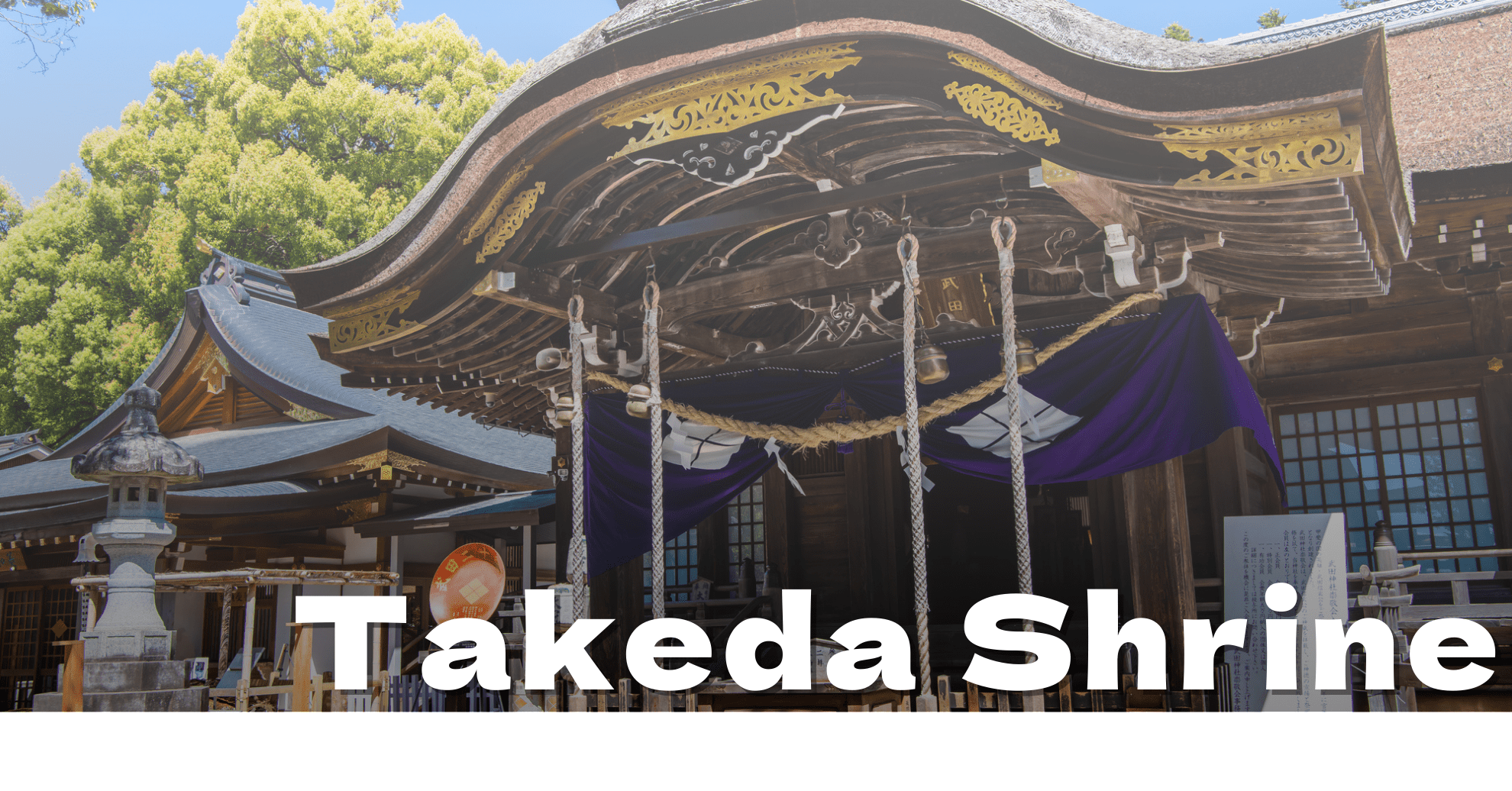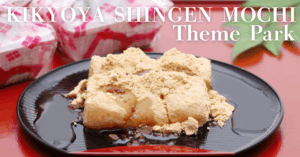Takeda Shingen, one of Japan’s most renowned samurai warlords of the Sengoku period, is often praised as one of the strongest military leaders in Japanese history. Based in present-day Yamanashi Prefecture, the Takeda clan expanded its power and became legendary through battles with rival warlords such as Uesugi Kenshin of Echigo (modern-day Niigata Prefecture).
Today, Takeda Shrine enshrines Takeda Shingen and remains a popular destination where visitors can experience the deep history of Japan and connect with its samurai heritage.
In this guide, we’ll introduce the highlights of Takeda Shrine, as well as practical information such as access tips, so you can make the most of your visit.
What Is Takeda Shrine?
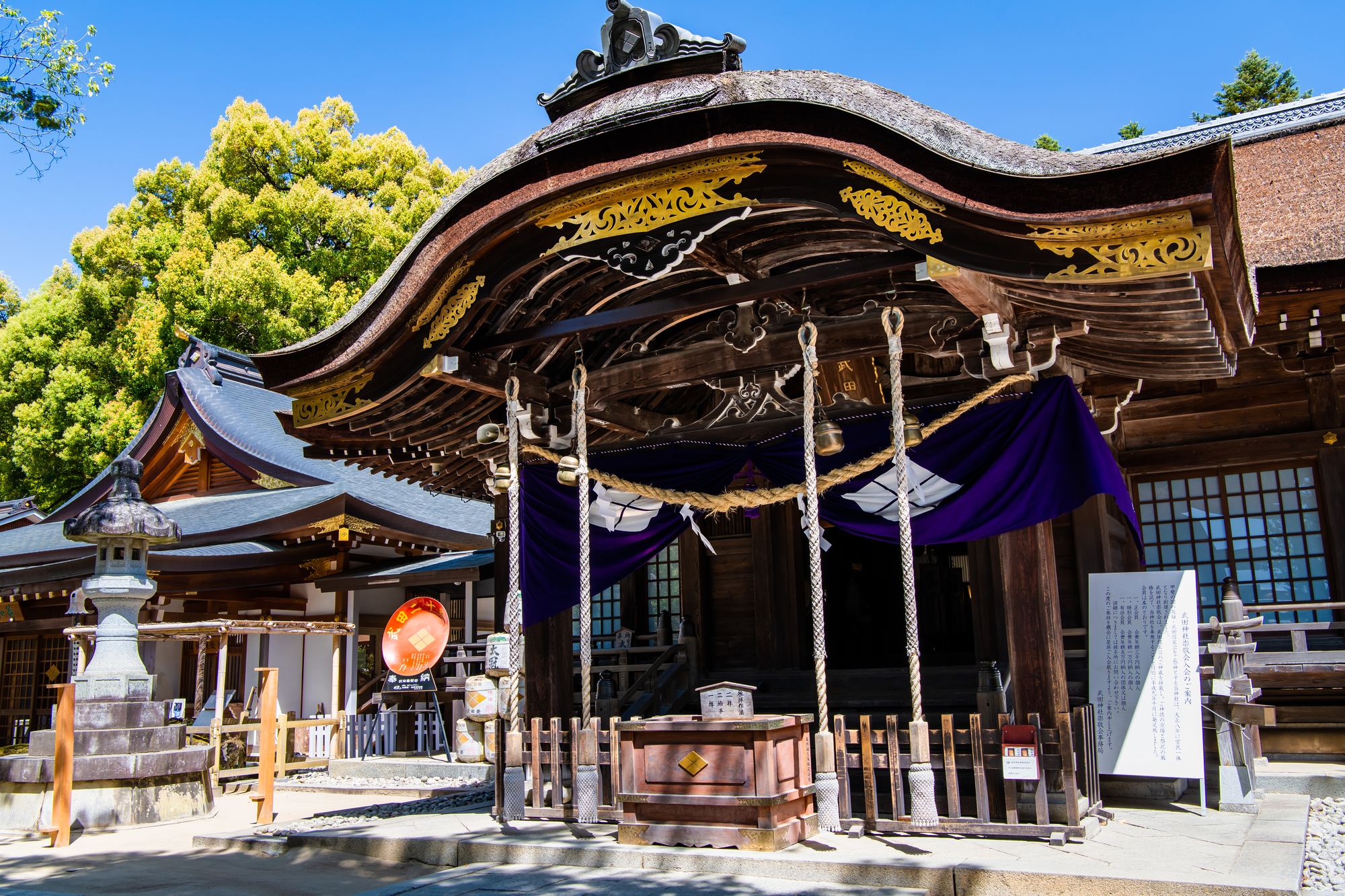
Takeda Shrine is dedicated to Takeda Shingen, the legendary warlord who represents Yamanashi during Japan’s Sengoku period.
In 1519, Takeda Shingen’s father, Takeda Nobutora, built his residence known as Tsutsujigasaki-yakata (Takeda Clan Residence), where retainers gathered and a castle town was formed. The site remained the political center of the Takeda clan for three generations—under Nobutora, Shingen, and Katsuyori—and even after the fall of the Takeda family.
Takeda Shrine was later established on the ruins of Tsutsujigasaki-yakata, which were designated a National Historic Site in 1940. Visitors can still see traces of its history today, including moats and stone walls that evoke the Sengoku era.
The shrine grounds are also home to spiritual spots such as the “Hime-no-Ido” (Princess Well), whose sacred water is believed to have blessings, and the “Mitsuba-no-Matsu” (Three-Leaf Pine), said to bring financial fortune.
On the right side of the main hall stands the Treasure Hall, where you can view displays of samurai armor, swords, and artifacts once belonging to the Takeda clan, offering a glimpse into Sengoku-period culture.
Throughout the year, the shrine is also known for its seasonal beauty—vivid autumn foliage from late November to mid-December, and cherry blossoms in full bloom from late March to early April make it a picturesque spot in every season.
Highlights of Takeda Shrine
Main Hall (Haiden)
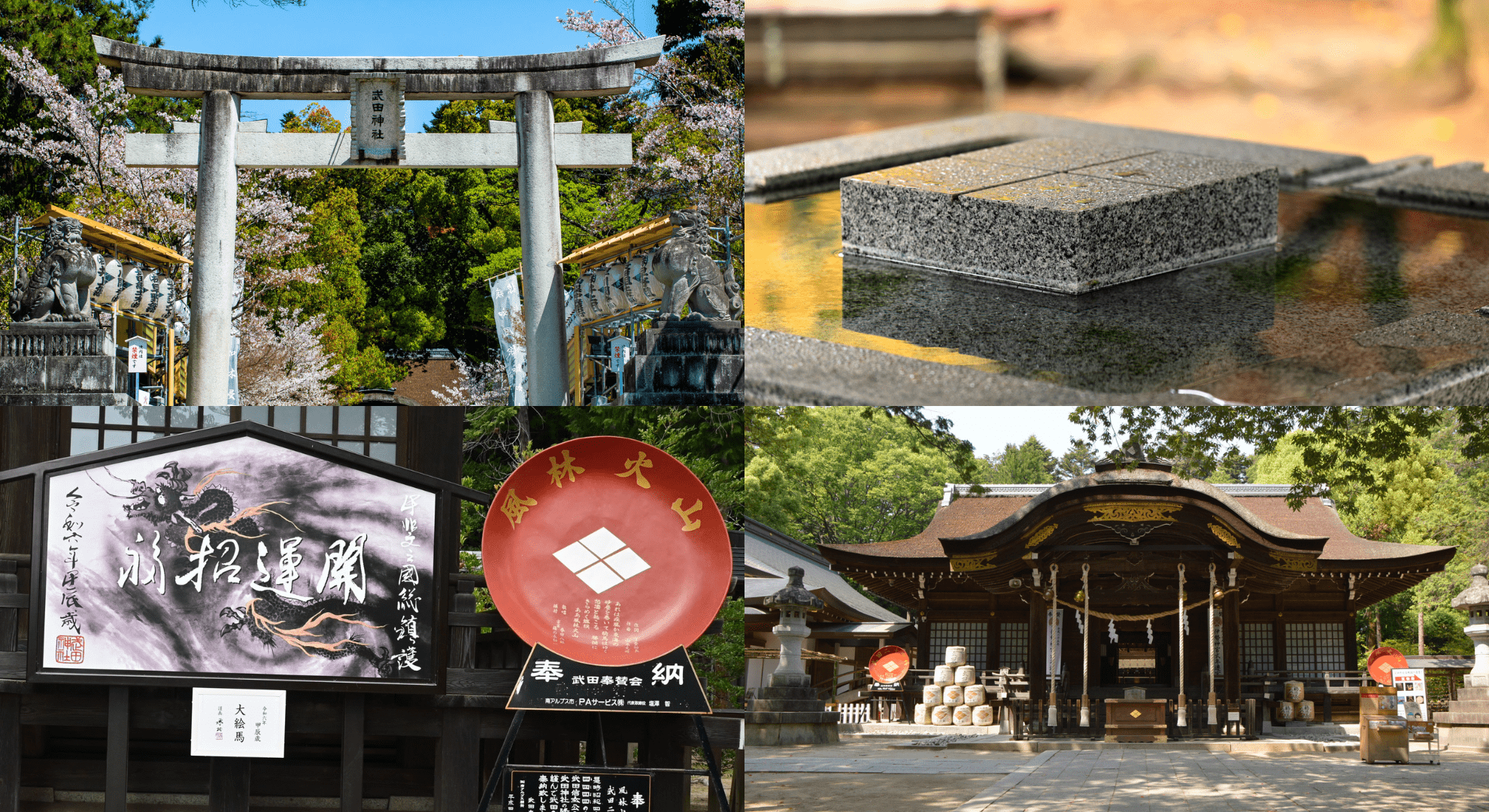
Takeda Shrine is believed to bring blessings of victory, good fortune, business success, and financial prosperity, making it a popular place for prayers.
Before worship, visitors purify themselves at the temizuya (water basin), which is designed in the shape of the Takeda clan crest. Just beyond the first torii gate, you’ll also find the rare “Mitsuba-no-Matsu” (Three-Leaf Pine). Since its golden leaves are said to symbolize wealth, it is thought to bring good luck with money.
On either side of the main hall stand large sake cups inscribed with the Takeda clan’s famous slogan, “Fūrinkazan” (Wind, Forest, Fire, Mountain)—an impressive sight that reflects the clan’s warrior spirit.
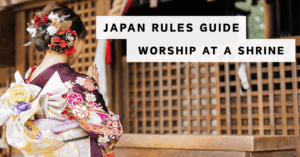
Treasure Hall
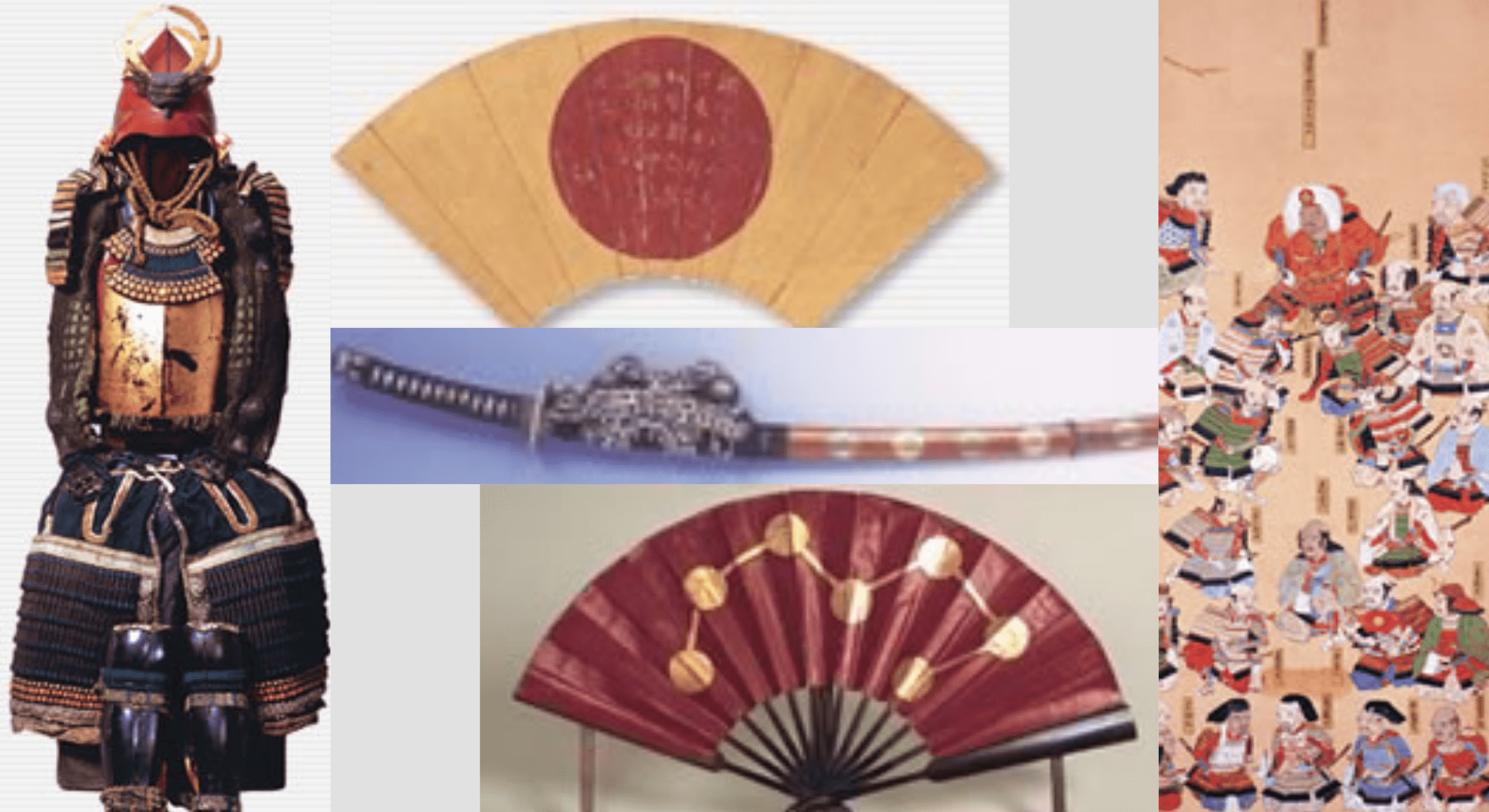
The Treasure Hall preserves valuable artifacts such as the “Yoshioka Ichimonji” sword, a designated Important Cultural Property of Japan, as well as samurai armor once used in battle. These rare treasures, found only here, transport visitors back to the Sengoku era.
| – | Adults (high school and above) | Children (elementary & junior high) |
|---|---|---|
| Personal fee | ¥300 | ¥150 |
| Groups (30+ people) | ¥240 | ¥120 |
Sacred Spring “Hime-no-Ido”
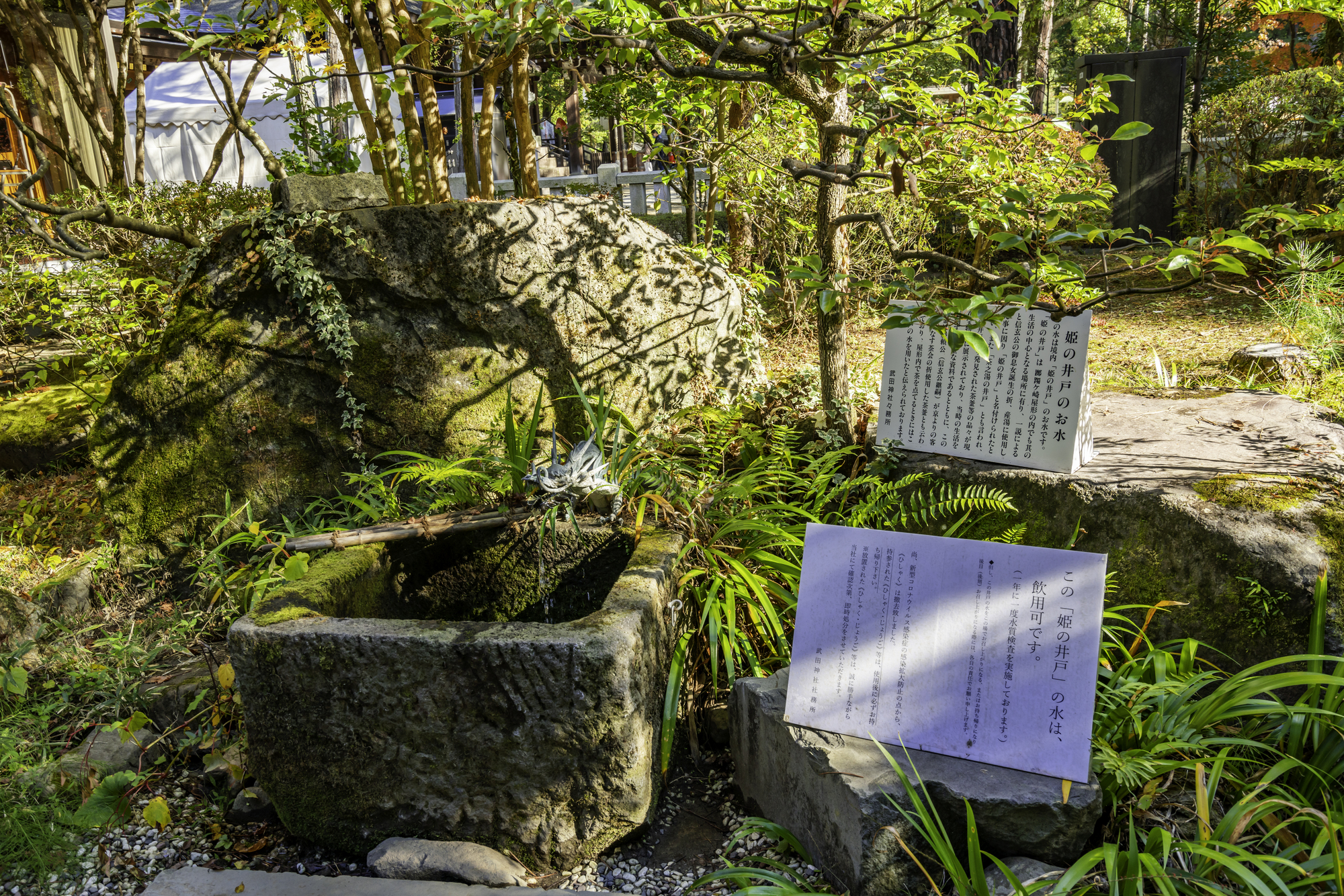
Located beside the main hall, this spring was used for the birth bath of Lord Shingen’s daughter and has long been regarded as sacred water. Also called the “Tea Ceremony Well”, it was historically used for preparing tea. Believed to grant long life and protection from illness, visitors often bottle the water to take home.
Suikinkutsu (Water Harp Cave)

Next to Hime-no-Ido is the Suikinkutsu, where water drips into an underground chamber, producing a delicate, harp-like sound. This Edo-period garden feature is said to calm the mind with its clear, musical tones.
Goshuin & Omamori (Seals & Amulets)
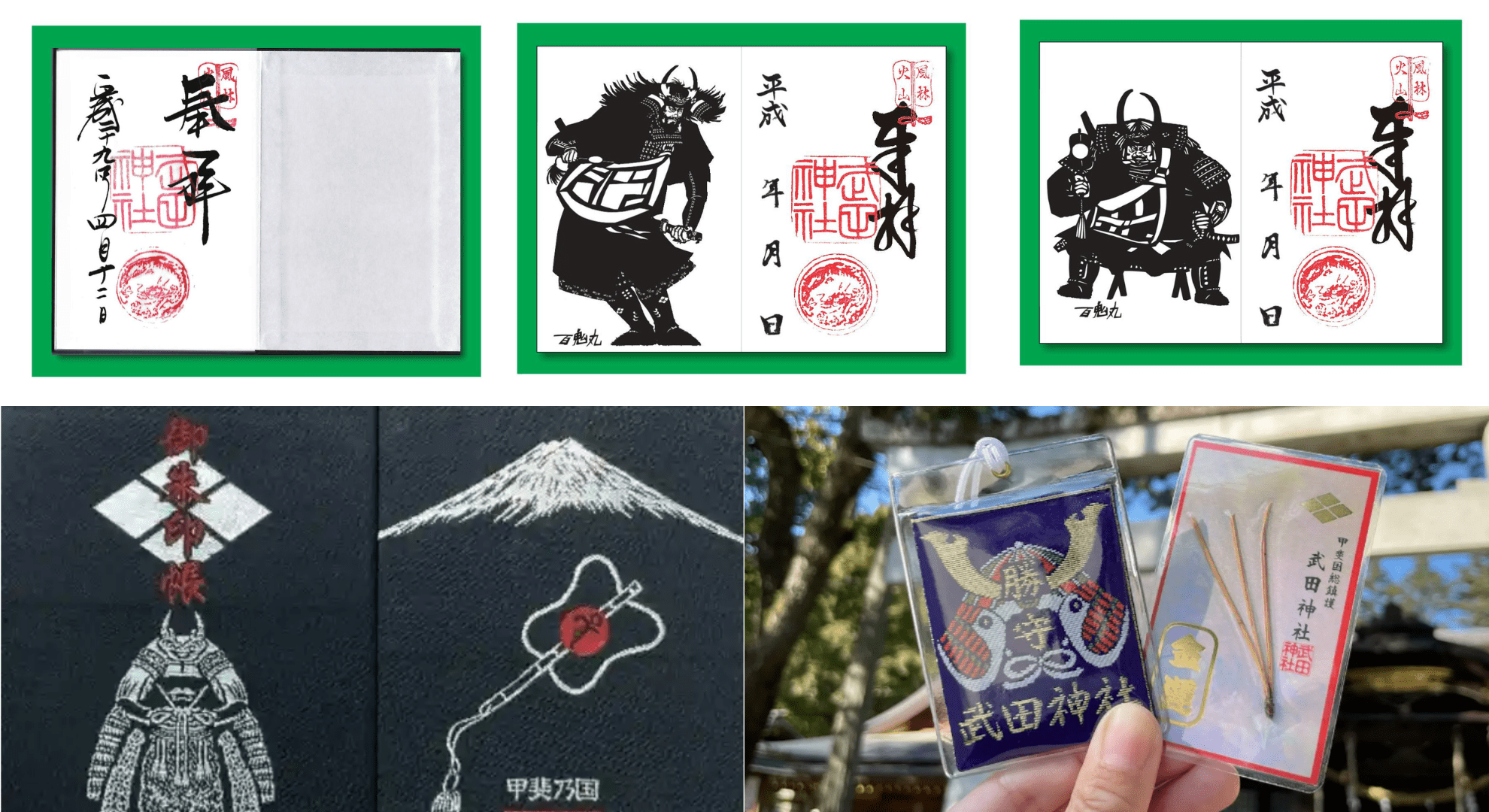
https://www.tabirai.net/localinfo/article/article-11861/
https://hotokami.jp/area/yamanashi/Hkgtk/Hkgtktk/Drzam/123174/goshuins
Visitors can collect two types of goshuin (temple stamps):
- A standard stamp pressed directly into your goshuin book (¥300).
- A special cut-paper design (¥500) by artist Hyakkimaru, featuring Takeda Shingen in standing or seated poses. Each includes the shrine’s name, the slogan “Fūrinkazan”, and Shingen’s red seal of the dragon.
Original goshuin books (¥2,000) are also available, making them perfect souvenirs.
The shrine also sells a wide range of omamori (amulets), such as those shaped like the Takeda crest or a war fan symbolizing the Sengoku period. Popular items include the “Katsu-mamori” (Victory Amulet) for success in sports and business, the “Kin’un-mamori” (Wealth Amulet) containing pine leaves from the Three-Leaf Pine, and the “Kenjō Inden Amulet” crafted from traditional Inden leather for health and protection.
Hello Kitty Stone Statue
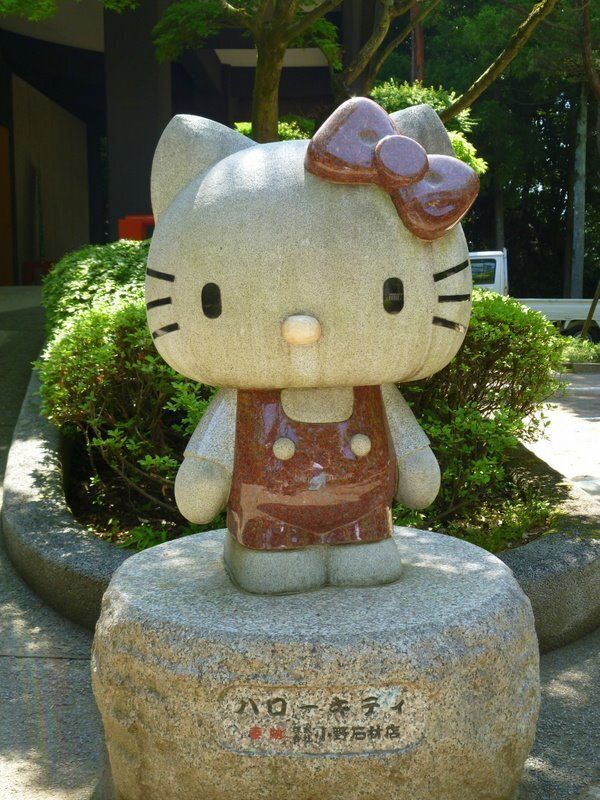
A quirky hidden spot is the Hello Kitty stone statue located in front of the Treasure Hall. This was built because Kōfu City, Yamanashi, is the hometown of Sanrio founder Shintaro Tsuji, making it known as the birthplace of Sanrio.
In fact, a Sanrio Museum is scheduled to open in Kōfu in 2025, so be sure to pair your shrine visit with this upcoming attraction!
Access to Takeda Shrine
| Address | 2611 Kokufuchō, Kōfu City, Yamanashi 400-0014 |
|---|---|
| Phone | 055-252-2609 |
| Business hours | 9:00~16:00 |
| Closed | – |
| Website | http://www.takedajinja.or.jp/ |
By Train
From JR Kōfu Station (North Exit), take a Yamanashi Kōtsu bus bound for “Takeda Shrine” or “Sekisuiji”. The ride takes about 8 minutes.
Kōfu Station itself is easily accessible, just about 90 minutes from JR Shinjuku Station via the limited express Azusa or Kaiji trains.
👉 For more details on the Azusa and Kaiji limited express trains, check here!

By Car
From the Chūō Expressway Kōfu-Shōwa IC, it’s about a 30-minute drive.
The shrine has a free parking lot available from 9:00 to 16:00, with space for up to 154 passenger cars. Since an elementary school is nearby, please drive carefully.
Live Camera Information
If you’d like to see the area around Takeda Shrine in real time, live camera footage is very useful.
In spring, cherry blossoms bloom in full glory, while in autumn, brilliant red foliage decorates the grounds. The cameras also allow you to check surrounding traffic conditions, making it easier to plan your visit.
Best of all, you can enjoy the majestic view of Mt. Fuji 24 hours a day, with its beauty changing depending on the weather and time of day.

Summary
In this guide, we introduced the highlights of Takeda Shrine, from its historical treasures linked to Takeda Shingen to its seasonal natural beauty.
For history enthusiasts and travelers alike, Takeda Shrine offers a unique opportunity to experience both Japan’s samurai heritage and Yamanashi’s stunning scenery.
Be sure to visit Takeda Shrine and take in its deep history and serene atmosphere for yourself.
👉 On JAPANOPIA, we also feature many more shrines, power spots, and attractions in Yamanashi, so don’t forget to check them out when planning your trip!
Recommended for You! Featured Articles You May Also Like
-

Ultimate Guide to Japan’s Music Festivals for First-Timers
-


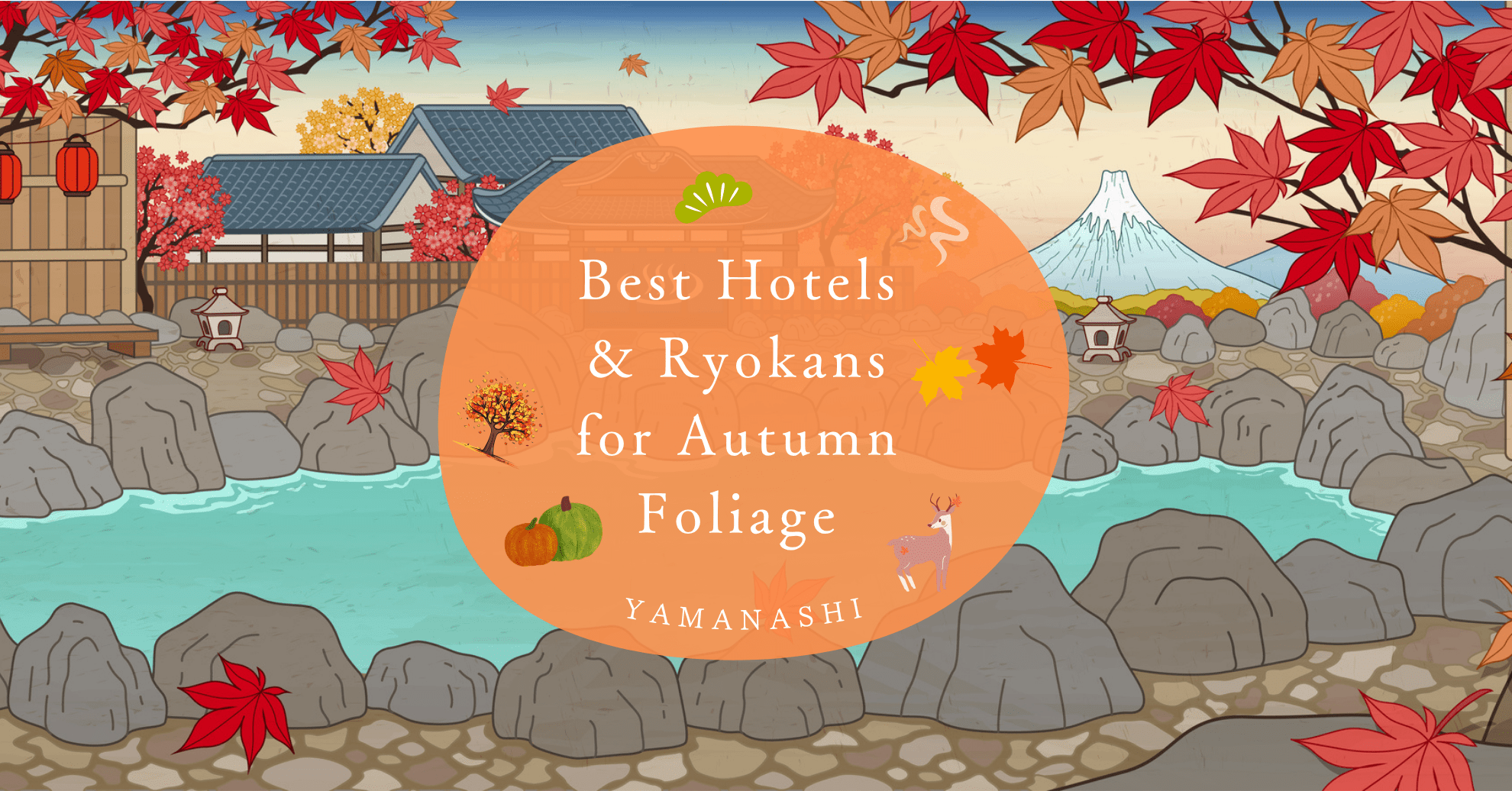
[2025] Experience Japan’s Autumn in Yamanashi | A Guide to the Best Hotels and Ryokans for Fall Foliage
-



【Famous & Hidden Spots】Yamanashi Autumn Foliage Guide 2025
-


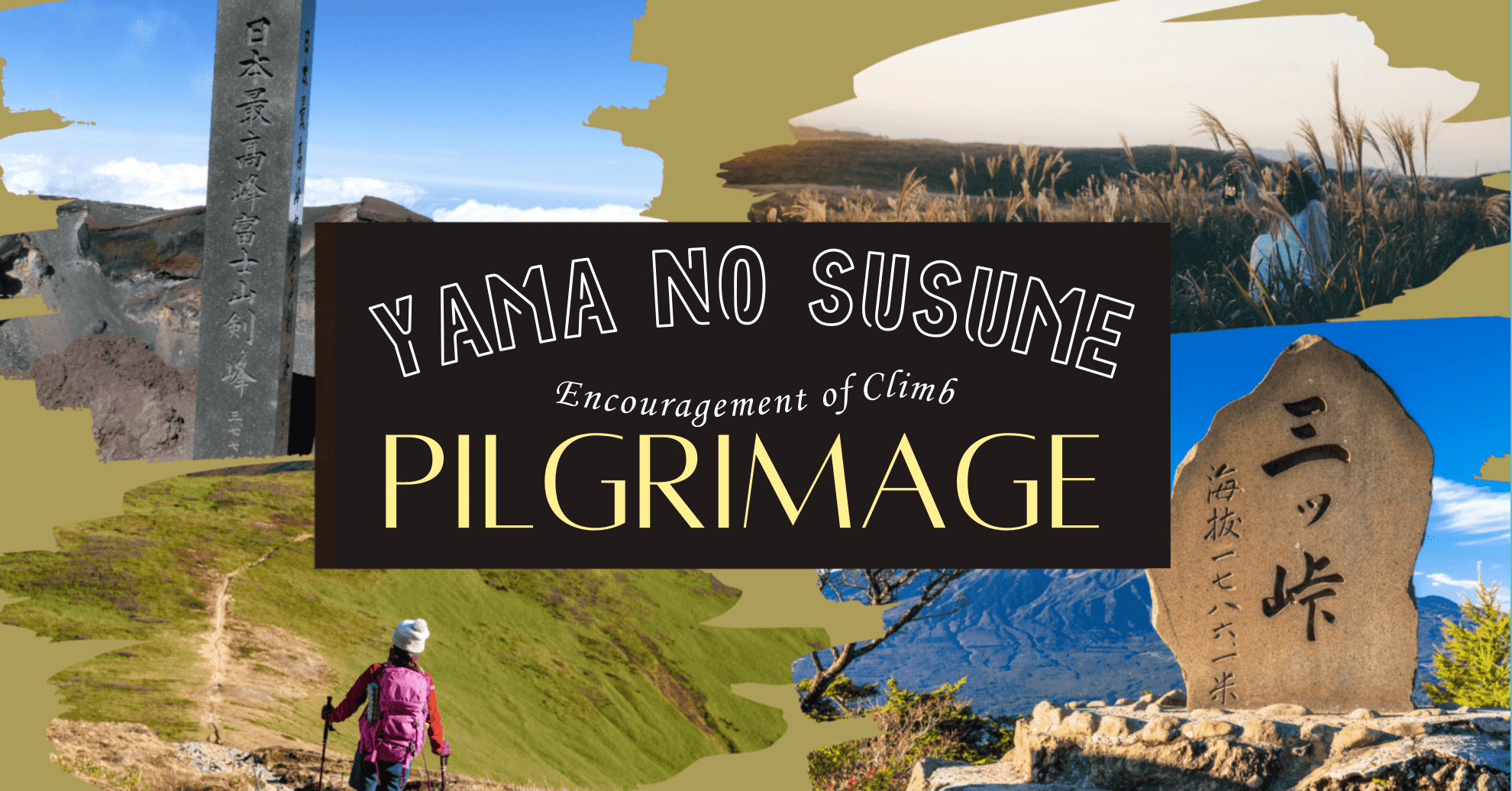
Walk Through the World of “Yama no Susume” | A Pilgrimage Guide for Anime Fans
-


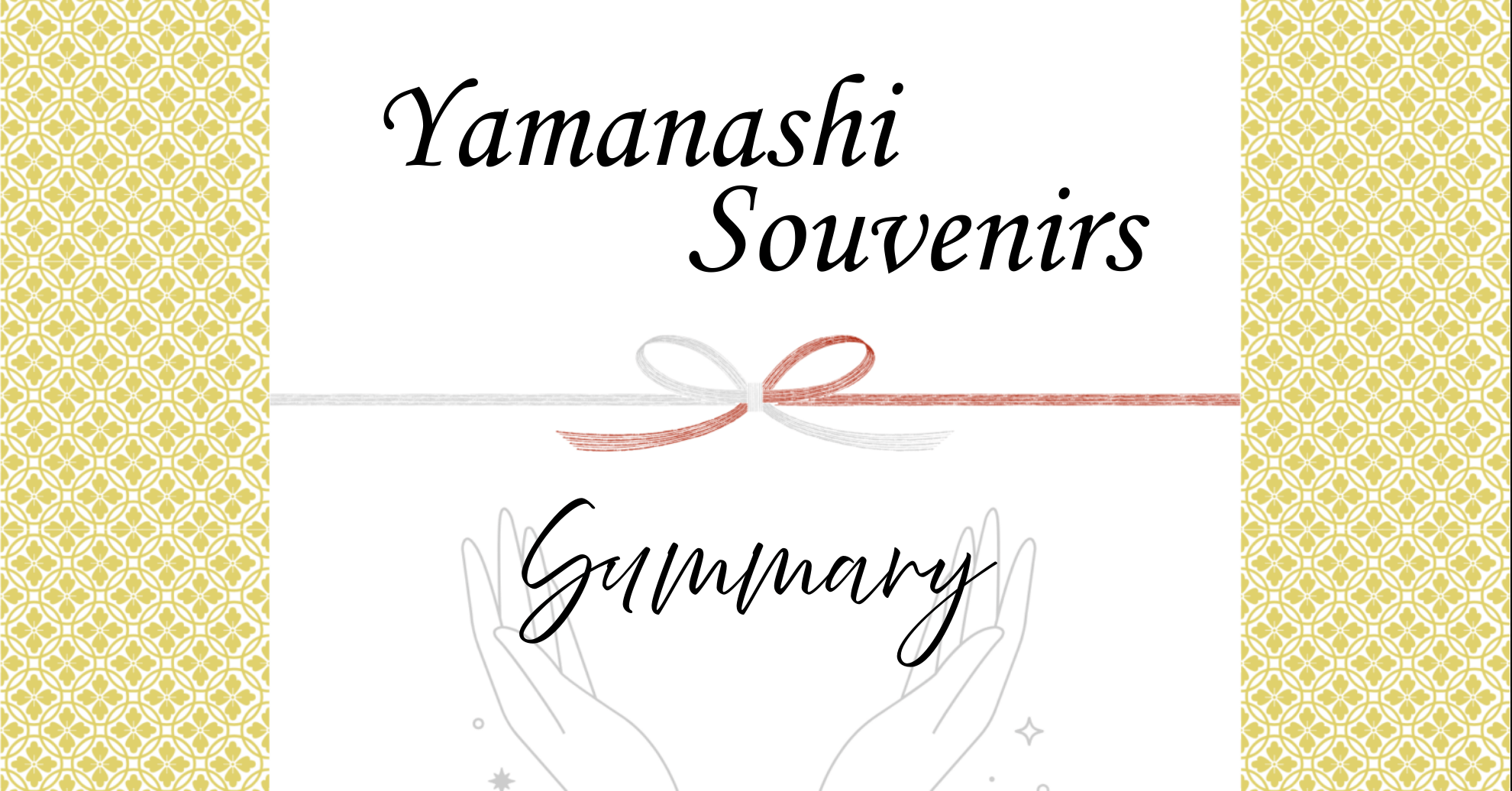
Perfect Souvenirs for Your Yamanashi Trip! Best Picks & Where to Buy
-



Discover the Best of Yamanashi: Seasonal Festivals & Events Guide

